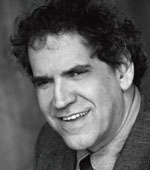Understanding the Talmud: A Systematic Guide to Talmudic Structure and Methodology by Rabbi Yitzchak Feigenbaum; Feldheim; 2nd edition (1988); ISBN
By Rabbi Michael Leo Samuel

CHULA VISTA, California — Some Aramaic scholarly friends of mine who speak and know Talmudic Aramaic often complain about the poor syntax of the Talmud. To most English readers, it almost seems as if the rabbis left out every other word in a sentence.
Why is it so hard to decipher Talmudic Aramaic? It is possible that the Jews who spoke Jewish Aramaic probably sounded like immigrants struggling to express the simplest thought in their communications!
Yet, over time the Talmud did develop its own unique syntax along with its own internal logos that an outsider needs to study and master, if he or she is to become conversant with its message.
That’s how dialects in regional languages are born.
With this short introduction, I will briefly comment about Rabbi Yitzchak Feigenbaum’s book, Understanding the Talmud: A Systematic Guide to Talmudic Structure and Methodology. Talmudic language is a lot like scientific language, and instead of mastering the Periodical Table of Elements, to understand Talmud, you can develop a feel for the language by observing how its language is used.
Most Israelis and people who are fluent in Modern Hebrew will tell you that R. Adin Steinsaltz’s Hebrew translation of the Talmud does a splendid job in helping students master this ancient dialect of Jewish Aramaic.
Despite some of the inherent difficulties present in Talmudic discourse, I think Feigenbaum’s book does a fine job with acquainting the neophyte.
Here are some examples: Peshitta literally means “obvious” and Feigenbaum explains that peshita is an attack question, that while the statement in question is true, it was not necessary to state it. The statement, according to this attack question, tells us something obvious, something we would have known without the statement telling us so.” (Pg. 79).
The author might have considered adding that tonality in Talmudic Aramaic is an important part of how we as human beings communicate. In tonal languages such as Chinese, the slightest inflection in how a word is pronounced may indicate something foolish or wise depending what tone the speaker uses.
Using the case of peshitta, the tonal question might be, “So nuuuuuuuuuuuu! Or, “No daaah, isn’t that obvious???” As you can see the musicality of Talmudic dialogue is one of Talmudic Aramaic’s more endearing and unforgettable qualities I will always remember from my days in the yeshiva world. The yeshiva’s discussion of the Talmud is always animated.
Feigenbaum goes on to say, “The answer to such a question must show why the statement is not superfluous. It must tell us that we would not have arrived at this [logical] conclusion had the statement not been made—and that we would have come to a different conclusion.”
This book is full of such examples of Talmudic attack questions. Is it not any wonder why only Jewish tradition could create a Freud and a Derrida? The polyvalence of Talmudic concepts also explains why Jews make such excellent attorneys. Truth is fluid and it is always challenging our old suppositions of how we understand a text. Feigenbaum introduces the assumptions one might have thought (salka da’atcha a’mina) had it not been for the text in question.
Hegel’s dialectic method involving thesis, antithesis, and synthesis is at the heart of Talmudic discourse and yes, had Hegel been Jewish, he would have made an outstanding Talmudist! The same could certainly be said about Socrates who favored truth as the highest value in life.
Rationality always appeals to logic and not emotion; it aims for persuasion and the discovery of truth to guide our behavior. The rabbis were not Sophists, but they believed like Socrates that the logical presentation of ideas provide essential tools for living a holy life.
Faigenbaum does not mention Socrates, but he does mention in the introduction to his book, “We begin with a question. This book is meant, above all, to teach you to ask the right questions. To achieve a precise peshat (understanding) of a section in Gemora, one must first ask the proper questions…” (p. 2). This approach sounds fairly Socratic to me!
To make the arguments easier to grasp, the Feigenbaum uses flowcharting to break the logical sequencing of the discussions and the ideas that they present to the critical mind. Feigenbaum gives numerous other examples of what he calls “attack questions” to his readers to ponder.
Sometimes the rabbis of the Talmud remind me of the person who always hits a bulls-eye by painting a target around the arrow. The rabbis refer to this method as asmakhta – a scriptural support for already existing customs and established traditions. It is a pity the author did not discuss this important aspect of Talmudic thought, for it shows how plastic the biblical text could be in the hands of the Talmudic master.
For the yeshiva alumni, I think the Understanding the Talmud: A Systematic Guide to Talmudic Structure and Methodology will provide a pleasant review of the Talmudic concepts yeshiva students once studied but forgot over the years. For the new student of Talmud, I think Feigenbaum’s approach of fleshing out the logic of Talmudic discourse might make the study of Talmud more challenging, and hopefully illuminating for serious students.
*
Rabbi Samuel is spiritual leader of Temple Beth Shalom in Chula Vista. He may be contacted via michael.samuel@sdjewishworld.com